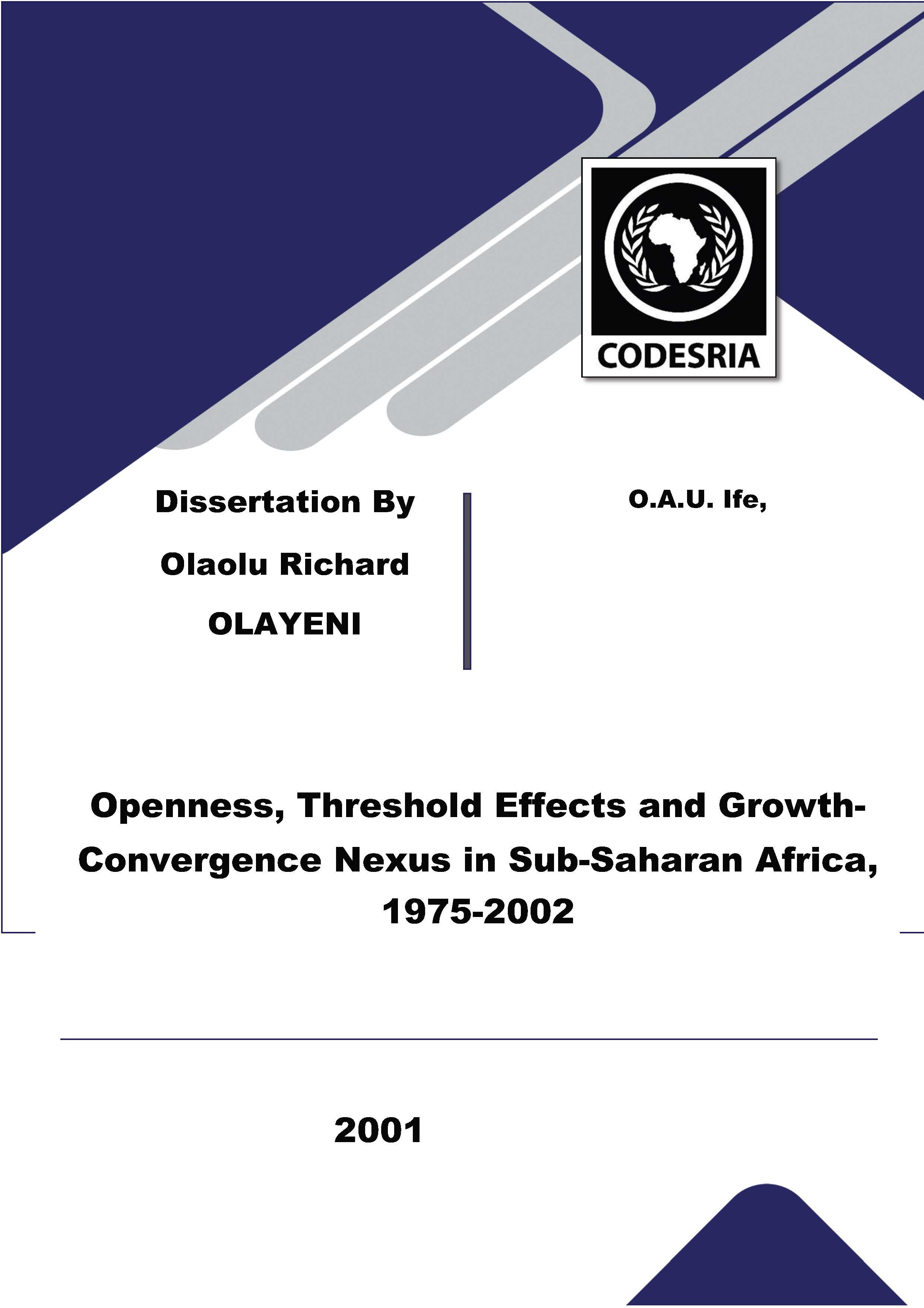Openness, Threshold Effects and Growth- Convergence Nexus in Sub-Saharan Africa, 1975-2002
Mots-clés :
Economic growth, open economy, coonvergence, Africa South of SaharaSynopsis
The study analyzed the forms and patterns of convergence among sub Saharan African
countries, established the existence of openness threshold point and analyzed the
growth impact of openness under threshold effects. This was with a view to shedding
more light on the proposition that more open economies grow faster than less open
economies.
The study employed secondary data sourced from World Development Indicators
and Penn World Table (6.0). It focused on a cross-section of thirty sub-Saharan
African countries for the period 1975-2002. The two-stage-least-square (TSLS) regression
method and the data-splitting technique of Hansen were employed to analyze the
data ..
The study found out that for sub-Saharan Africa as a whole, openness was negatively
associated with growth but not statistically significant, the elasticity coefficient
being -0.002 (t=-0.40, p>0.05). It was also found out that the threshold point was
68.3 times the real national incarne with 10.38 as the corresponding minimum sum of
squared residual. The 5% bootstrapped èonfidence values for this threshold estimate
were 65.5 and 71.2 respectively.These confidence values correspond to the 2.5 and
97.5 percentiles respectively of 1000 draws sampling from the residuals.
The rate at which the poor countries caught up with the rich was found to be faster
among the less open economies than among the more open economies. The convergence
speeds were 1.97% and 1.04% annually for less open and more open economies
respectively. The growth elasticity coefficient of openness below the threshold point
Téléchargements
Références
Abramovitz, M (1986), "Catching Up, Forging Ahead and Falling Behind." Journal of Economie History(June) pp. 385-406.
Aghion, P. and P. Howitt (1998). Endogenous Growth Theory. MI1 Press, Cambridge,MA.
Alemayehu, G (2001) Debt Issues in Africa: Thinking Beyond the HIPC Initiative to Solving Structural Problems Paper for a WIDER Conference on Debt Relief, Helsinki Asiama J. P., and M. Kugler (2003) Is Sub-Saharan Africa a Convergence Club?
Available at www.isser.org/6%20Asiama_Kugler.pdf
Baldwin, R. (1989). "The growth effects of 1992". Economie Poliçy (October), pp. 247-281.
Barro, R. J., and X. Sala-i-Martin, (1992). "Convergence." Journal of Political Economy, 100(2), pp. 223-251.
Baumol W. (1988) "Productivity Growth, Convergence and Welfare:What the Long Run Data Show", American Economie Review, Vol. 76 (December), pp. 1072-85






